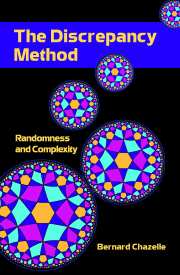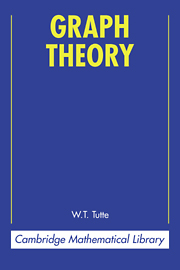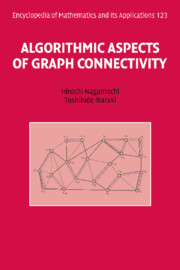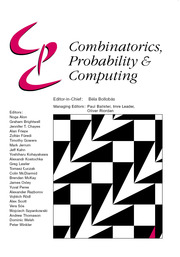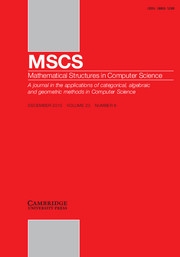The Discrepancy Method
The discrepancy method is the glue that binds randomness and complexity. It is the bridge between randomized computation and discrepancy theory, the area of mathematics concerned with irregularities in distributions. The discrepancy method has played a major role in complexity theory; in particular, it has caused a mini-revolution of sorts in computational geometry. This book tells the story of the discrepancy method in a few short independent vignettes. It is a varied tale which includes such topics as communication complexity, pseudo-randomness, rapidly mixing Markov chains, points on the sphere and modular forms, derandomization, convex hulls, Voronoi diagrams, linear programming and extensions, geometric sampling, VC-dimension theory, minimum spanning trees, linear circuit complexity, and multidimensional searching. The mathematical treatment is thorough and self-contained. In particular, background material in discrepancy theory is supplied as needed. Thus the book should appeal to students and researchers in computer science, operations research, pure and applied mathematics, and engineering.
- Several of the most exciting recent results in algorithms and complexity are covered
- Self-contained, with much of the mathematical background provided. Chapters are mostly independent, so the book can be used as reference.
- A potential classic along the lines of The Probabilistic Method by Alon and Spencer (published by Wiley)
Reviews & endorsements
"Chazelle writes well, treats the reader generously, and works passionately to find the common threads in a plethora of important, late-breaking developments at the crossroads of mathematics and computer science. Both as personal testament and crafted exposition, this invitation into ongoing research reads with the feel of an intimate audience with an enthusiastic leading expert. Upper division undergraduates through professionals." Choice
Product details
July 2000Hardback
9780521770934
494 pages
229 × 152 × 32 mm
0.89kg
160 b/w illus.
Available
Table of Contents
- 1. Combinatorial discrepancy
- 2. Upper bounds in geometric discrepancy
- 3. Lower bounds in geometric discrepancy
- 4. Sampling
- 5. Geometric searching
- 6. Complexity lower bounds
- 7. Convex hulls and Voronoi diagrams
- 8. Linear programming and extensions
- 9. Pseudo-randomness
- 10. Communication complexity
- 11. Minimum spanning trees
- A. Probability theory
- B. Harmonic analysis
- C. Convex geometry.

